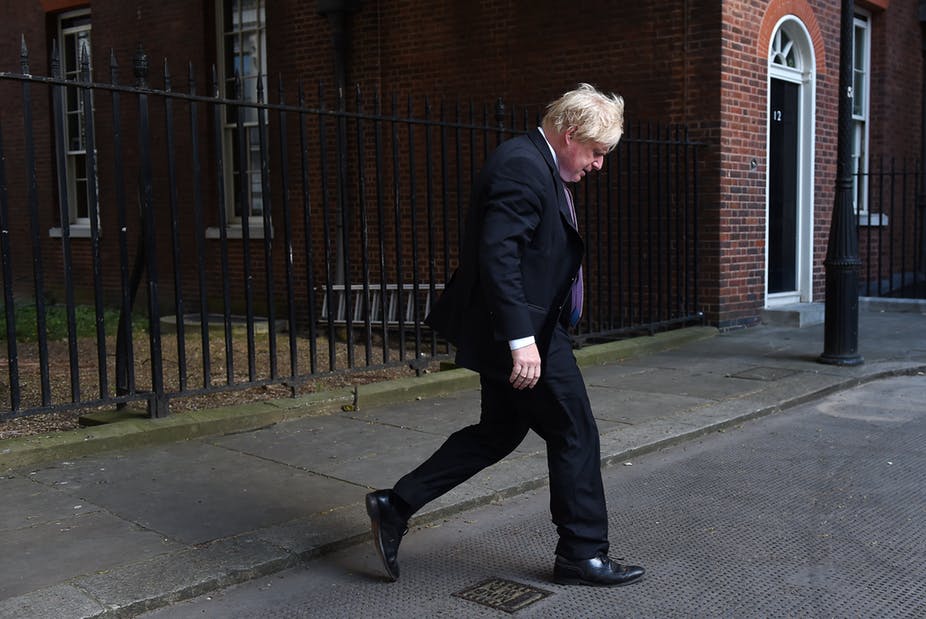For his forthcoming Budget on March 11, Chancellor Sajid Javid has promised to “unleash Britain’s potential – uniting our great country, opening a new chapter for our economy and ushering in a decade of renewal”. This was on the back of the Conservative Party’s 2019 election manifesto commitment “to use our post-Brexit freedoms to build prosperity and strengthen and level up every part of the country”.
Yet so far, the government of Boris Johnson has been noticeably vague as to precisely what is to be “levelled up” or over what time frame – beyond talking about more funding for schools, health, police and infrastructure in England. There are at least three very good reasons for being in no hurry to get into details.
1. The manifesto paradox
The Conservatives made manifesto commitments not to raise the rate of VAT, income tax or national insurance, and not to borrow to finance day-to-day current spending. Their plans to borrow to finance net public investment in infrastructure will not average more than 3% of GDP over the current parliament, and even those modest plans will be reassessed if debt interest reaches 6% of revenue.
According to the Institute for Fiscal Studies, commitments already made on increased funding for the National Health Service (NHS) in England mean that, beyond the Department of Health and Social Care, total day-to-day spending on public services is “set to be 16% below 2010-11 levels (21% in per-person terms)”. So under current plans, austerity will continue for the majority of services in the majority of communities in England.
Yet having won its 80-seat majority on the back of punching significant holes in the Labour Party’s much vaunted “red wall” of constituencies across the midlands and north of England, the Johnson government will not be able to sate public expectations if its ambition is limited to a few high-profile infrastructure projects. The Johnson government therefore faces a strategic domestic political, ideological and policy dilemma of how to reconcile its fiscal conservatism with all the talk of uniting and levelling up.
2. The London dilemma
One possible solution would be for the government to redistribute resources away from the “southern powerhouse” of Greater London, the south east and east of England to stoke the “midlands engine” and that other powerhouse further north. Yet the government has just been warned against that course of action by both Sadiq Khan, the mayor of London, and Paul Dreschler, the chair of business lobby group London First.
Lest the Treasury forget, on the tax revenue side of the national balance sheet, only London (£38.9 billion), the south east (£21.9 billion) and the east of England (£4.2 billion) actually produced net fiscal surpluses in the financial year ended March 31 2019. Everywhere else was in deficit, including the north west (£20.1 billion), the north east (£10.7 billion) and Yorkshire and the Humber (£11.3 billion), Scotland (£14.8 billion) and Wales (£13.4 billion). It won’t be easy to reduce inequality without killing the golden goose – or at least giving it a few bruises.
3. The bad lieutenants
There is no shortage of blueprints on what might be done. Dominic Cummings, Boris Johnson’s chief special adviser, has identified A Resurgence of the Regions, a paper by Richard Jones, a professor in the department of physics and astronomy at the University of Sheffield, as an agenda “about how the new government could really change our economy for the better, making it more productive and fairer”.
Jones’ 2019 paper outlined a classic technocratic blueprint for more direct strategic intervention “to build up the innovation capacity of those regions of the UK which currently are economically lagging”. He advocates rebuilding innovation outside the south east by establishing institutes that would translate research into actual commercial products and services, and foster similar ecosystems for innovation to those in London and Cambridge – while allowing different regions to pursue deviations that suited their strengths.
Hitherto, the principal proponent of such thinking within the Conservative Party was the arch-Remainer Michael Heseltine. He urged the Cameron government to “leave no stone unturned” in pursuing growth in the English regions, and advised the May and Johnson governments to create a new dedicated department.
This would mean a return to the politics of the government of Edward Heath, who, like Heseltine, envisaged large-scale Whitehall intervention via a national industrial strategy. Rejecting such dirigisme, Margaret Thatcher was more open to ideas about moving towards a German social market economy focused on individual entrepreneurship, risk-taking and market competition.
Johnson is reported to have told his cabinet colleagues that he was “basically a Brexity Hezza”. But to even contemplate a return to such interventionism would be to court open ministerial revolt from a government containing all five authors of the quintessential Thatcherite work from 2012, Britannia Unchained – including Foreign Secretary Dominic Raab, Home Secretary Priti Patel and International Trade Secretary Liz Truss.
Britannia Unchained advocated unleashing Britain’s potential by dismantling the chains of public subsidy, taxes, welfare dependency and stifling regulation. The aim was to raise prosperity by encouraging a buccaneering entrepreneurial spirit, shaped by “graft, risk and effort in pursuit of long-term rewards”. Technocratic intervention was definitely not the order of the day.
In shaping the political priorities of the March budget, Johnson therefore has another very difficult mission on his hands. How to reconcile the conflicting constituencies of the north and south, of fiscal conservatism and levelling up; and how to pull it all off without poisoning relations with his key lieutenants. In short, “getting Brexit done” could be the least of his worries.



 Union-Aligned Investors Question Amazon, Walmart and Alphabet on Trump Immigration Policies
Union-Aligned Investors Question Amazon, Walmart and Alphabet on Trump Immigration Policies  Trump Administration Reviews Nvidia H200 Chip Sales to China, Marking Major Shift in U.S. AI Export Policy
Trump Administration Reviews Nvidia H200 Chip Sales to China, Marking Major Shift in U.S. AI Export Policy  U.S. and China Push for Ceasefire as Thailand–Cambodia Border Clashes Escalate
U.S. and China Push for Ceasefire as Thailand–Cambodia Border Clashes Escalate  EU Delays Mercosur Free Trade Agreement Signing Amid Ukraine War Funding Talks
EU Delays Mercosur Free Trade Agreement Signing Amid Ukraine War Funding Talks  U.S.-Russia Talks in Miami Raise Hopes for Potential Ukraine War Deal
U.S.-Russia Talks in Miami Raise Hopes for Potential Ukraine War Deal  Robinhood Expands Sports Event Contracts With Player Performance Wagers
Robinhood Expands Sports Event Contracts With Player Performance Wagers  U.S. Senators Move Toward Deal to Strengthen Military Helicopter Safety Rules
U.S. Senators Move Toward Deal to Strengthen Military Helicopter Safety Rules  Dan Bongino to Step Down as FBI Deputy Director After Brief, Controversial Tenure
Dan Bongino to Step Down as FBI Deputy Director After Brief, Controversial Tenure  Trump Administration Plans Major Increase in Denaturalization Cases for Naturalized U.S. Citizens
Trump Administration Plans Major Increase in Denaturalization Cases for Naturalized U.S. Citizens  Trump Expands U.S. Travel Ban to Antigua and Barbuda, Dominica, Sparking Economic Fears in the Caribbean
Trump Expands U.S. Travel Ban to Antigua and Barbuda, Dominica, Sparking Economic Fears in the Caribbean  Syria, Kurds and U.S. Race to Show Progress on SDF Integration Deal
Syria, Kurds and U.S. Race to Show Progress on SDF Integration Deal  U.S. House Advances GOP Healthcare Bill as ACA Subsidies Near Expiration
U.S. House Advances GOP Healthcare Bill as ACA Subsidies Near Expiration 

































